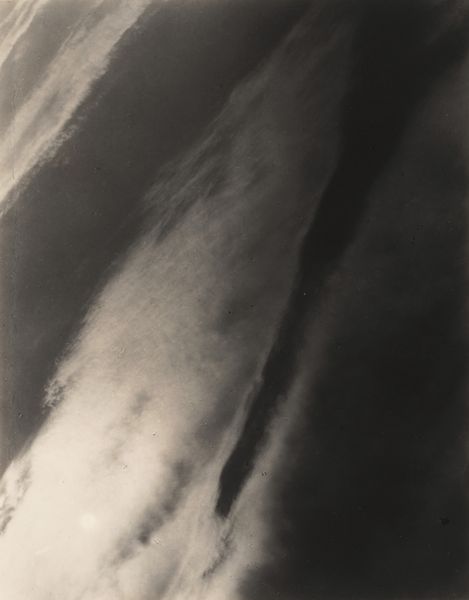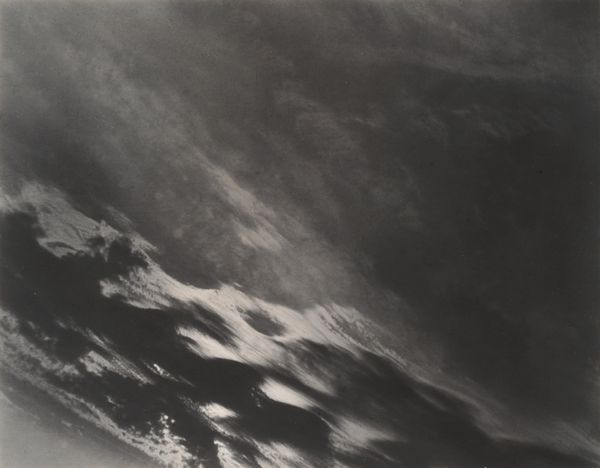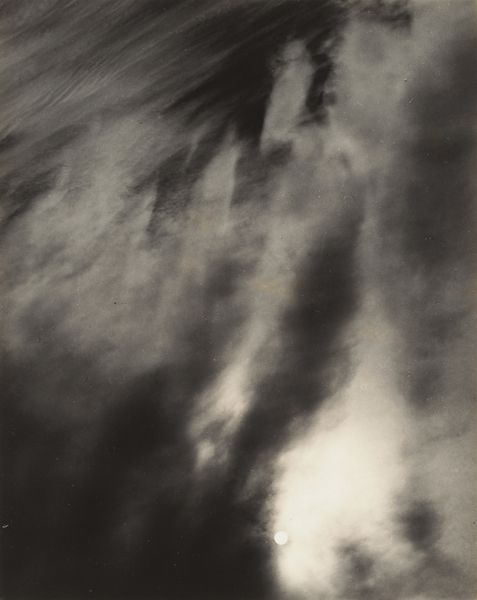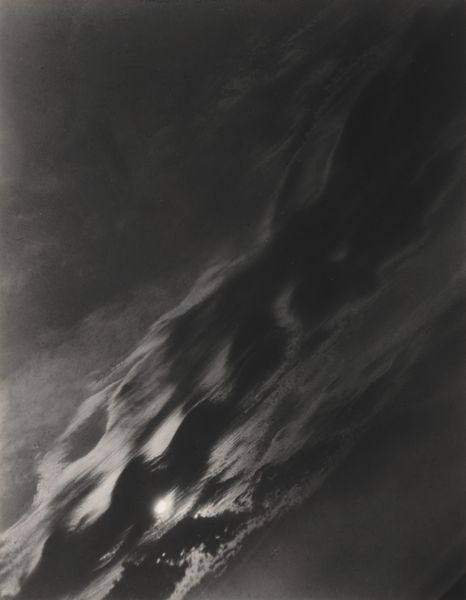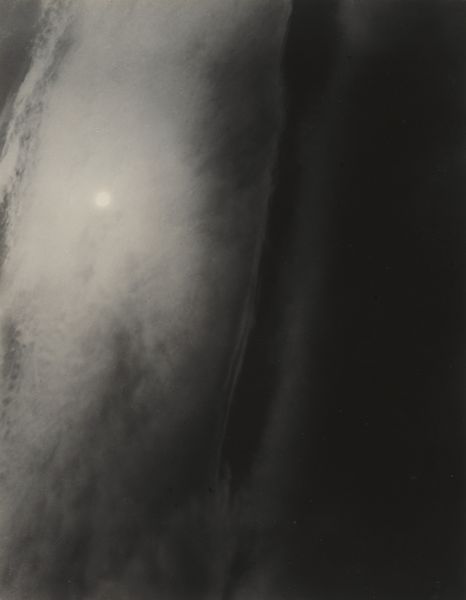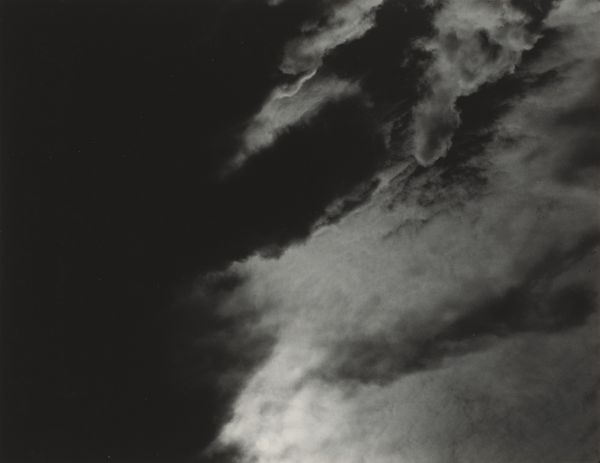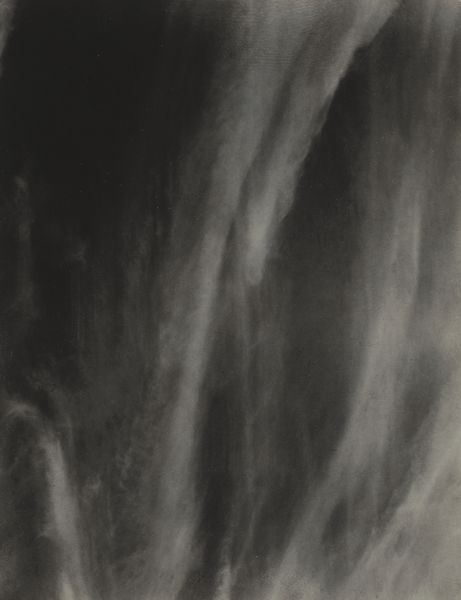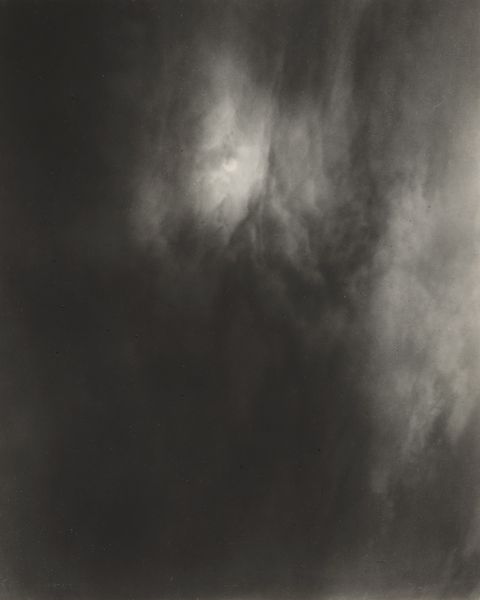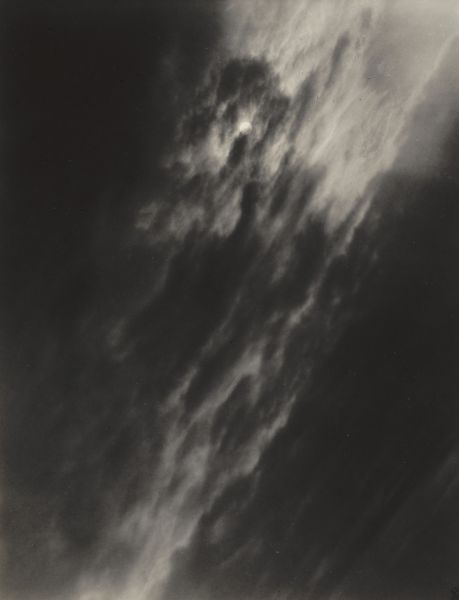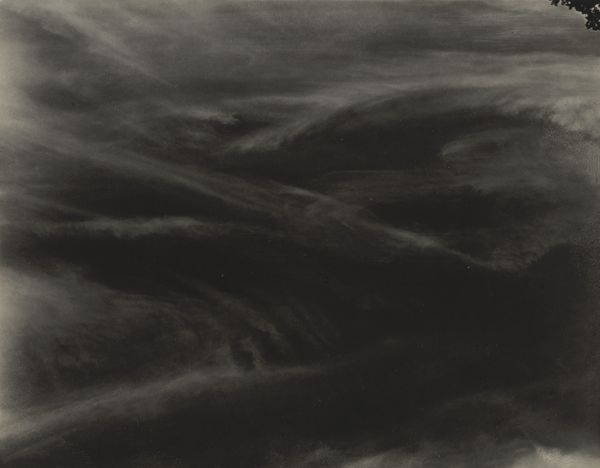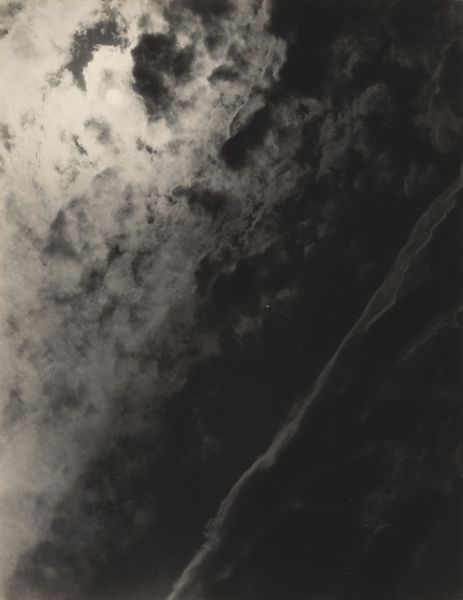
#
cloudy
#
black and white photography
#
snowscape
#
warm monochrome
#
dirty atmosphere
#
monochrome photography
#
gloomy
#
monochrome
#
monotone photography
#
shadow overcast
Dimensions: sheet (trimmed to image): 11.8 x 9.2 cm (4 5/8 x 3 5/8 in.) mount: 34.9 x 27.5 cm (13 3/4 x 10 13/16 in.)
Copyright: National Gallery of Art: CC0 1.0
Curator: This evocative image is part of Alfred Stieglitz's "Equivalent" series, taken in 1931. It's a gelatin silver print capturing an abstract arrangement of clouds. Editor: Immediately, I feel a sense of isolation looking at this, a kind of melancholic vastness. The contrast between the dark, looming cloud forms and that small, almost defiant sun, is quite striking. Curator: Stieglitz was deeply influenced by the Symbolist movement. He saw photography not as a mere recording tool, but as a way to express inner states and emotional equivalents. He sought to reveal something essential about the human condition through the clouds. Editor: Right, the clouds act as potent symbols here. The recurring motif of the sky holds celestial and divine significance. They almost resemble mountains and carry the psychological weight of aspirations and challenges, reflecting internal struggle. The light shining through—perhaps hope? Curator: Precisely. Stieglitz moved in circles in which he sought to explore these issues of hope but, considering this period—post-war anxieties, the Depression looming—it's difficult not to see this image as speaking to a larger sense of uncertainty. Editor: I'm struck by the formal elements, the dramatic chiaroscuro, the soft, almost painterly quality of the light. It evokes both beauty and a primal fear. What does this image say of nature, sublime and indifferent, in relation to humanity? Curator: It also raises complex questions about the role of gender in modernist narratives, positioning women within those historical currents. Are women visible agents in that picture? Editor: This one small photographic image, from the hand of Stieglitz, continues to prompt profound connections with our personal struggles and how we relate to the world around us. Curator: Ultimately, Stieglitz invites us to consider our own equivalents, what shapes and shades our emotional landscape within a larger tapestry of experiences and social factors.
Comments
No comments
Be the first to comment and join the conversation on the ultimate creative platform.
